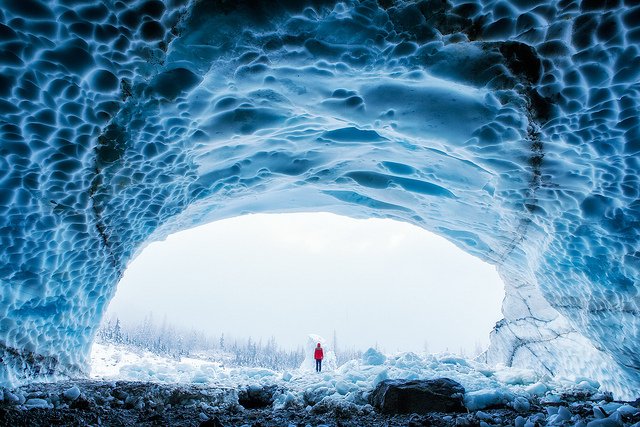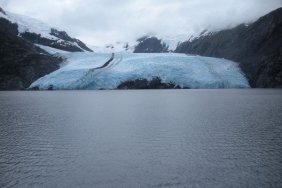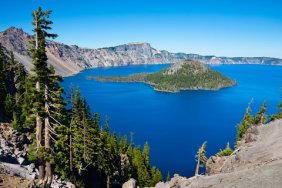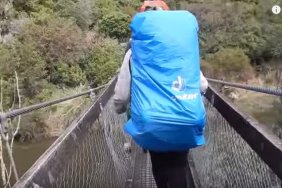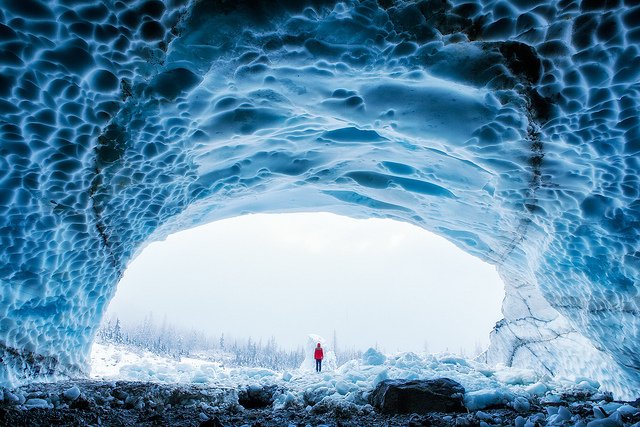
In yet another story that shows how important it is to follow marked warning signs, a hiker was recently killed in Washington when an ice cave collapsed. Earlier this month, a swimmer in Texas ignored signs about an alligator, which ended badly.
The Big Four Ice Caves are located in the Mt. Baker-Snoqualmie National Forest 70 miles from Seattle. The caves are naturally formed in rock, which during the winter ices over. With just 2.2 miles roundtrip, the site is easy to reach, and the reward is spectacular as four gaping ice caves tower overhead.
But with the hot weather we’ve been having lately, the signs were evident that getting too close could be dangerous. Last week a section of the cave collapsed without injury, and there were dozens of warning signs lining the trail including those sandblasted into boulders and even a memorial to a previous accident victim. On the Washington Trails Association website someone posted observations from that day.
“It was obvious that it was unsafe, yet people continued to allow their kids and dogs to get close to the entrance,” the hiker wrote. “Please, don’t ignore the signs, warnings, memorial plaque, and common sense and venture down to the entrance of the cave. It is not safe.”
The victim in Monday’s accident, a 34-year-old woman was excavated from the ice using small explosions and the help of an avalanche technician, according to the LA Times. Five other hikers were injured in the collapsed including two that were still hospitalized.
There were apparently other hikers in the cave entrance during the collapse. Chloe Jakubowski, 18, told the Seattle Times the scene was just gruesome.
“As soon as it stopped I looked up and looked around me and it was extremely gruesome, honestly,” Jakubowski, who suffered scrapes and bruises, told the paper. “Everybody there, we grabbed everybody out and helped as best we could.”
When she came to, a woman was unconscious next to her and other hikers had cuts and broken bones. Following the incident the Forest Service and Sheriff’s Department stressed that the warning signs were there and that people should not be venturing into the cave this time of year.
“As we head into the busiest and warmest part of the season, the cave is in its most dangerous state,” said Matthew Riggen from the U.S. Forest Service, in a statement from May. “The cave is in a condition that we would normally not see until at least September – large, inviting and collapsing.”
Photo credit: Flickr Creative Commons
